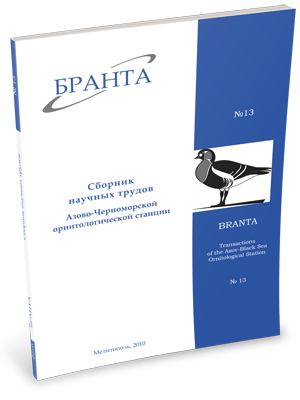
Transactions
of the Azov-Black Sea Ornithological Station



Toward wintering of birds on Khortitsa Island and adjacent waters of the Dnieper during 2008-2009
D. S. Oleynik, S. V. Kozodavov
The paper represents information on the researches conducted during the winter of 2008-2009 concerning to species composition, numbers, distribution density, and habitat distribution of birds on KhortitsaIsland and adjacent waters of the Dnieper.
In a total, for the winter period of 2008-2009 we have reliably registered 60 bird species. Apart from it, wintering of 7 additive bird species is supposed. The following orders were the most representative: Passeriformes - 31 species (46 %), Anseriformes – 11 species (16 %), Falconiformes - 8 species (11 %). Until the freeze up of water in late autumn the dominant waterbirds were the Great Cormorant (Phalacrocorax carbo) - up to 500 ind. and Mallard (Anas platyrhynchos) - up to 150 ind. However, the most numerous species among the wintering waterbirds in the season 2008-2009 was the Goosander (Mergus merganser). Diurnal birds of prey were represented by 8 species. Common wintering Passeriformes included 6-7 species. The dominant species was the Great Tit (Parus major), subdominants - Goldfinch (Carduelis carduelis) and Chaffinch (Fringilla coelebs).
The tail-water of the Dnieper Hydroelectric Power Station is an important area for wintering and formation of mass concentrations of waterbirds when the Dnieper waters freeze up. The highest summarized density of wintering Passeriformes was observed in gully forests.
Read the paper in a PDF file